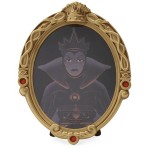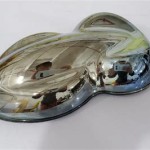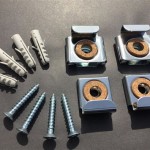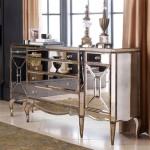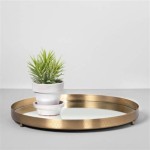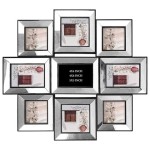Antique Gold Cheval Mirror: A Timeless Elegance
Antique gold cheval mirrors represent a blend of functionality and aesthetic appeal. Their full-length reflection capabilities combine with the ornate beauty of antique gold finishes, creating a statement piece for various interior design schemes. This article explores the history, styles, care, and considerations involved in owning an antique gold cheval mirror.
History of Cheval Mirrors
Cheval mirrors, also known as standing mirrors, originated in France during the 18th century. The name "cheval" derives from the French word for "horse," likely referencing the frame's resemblance to a horse's sawhorse. Initially crafted from wood, these mirrors gained popularity during the Victorian era, with increasingly elaborate designs and finishes, including the sought-after antique gold.
Antique Gold Finishes
The antique gold finish adds a touch of vintage charm and sophistication. Achieving this finish involves various techniques, including gilding, applying gold leaf or paint, and distressing the surface for an aged appearance. The specific techniques used contribute to the unique character and value of the antique mirror.
Styles of Antique Gold Cheval Mirrors
Antique gold cheval mirrors showcase a range of stylistic influences, including:
- Rococo: Characterized by ornate carvings, asymmetrical designs, and shell motifs.
- Neoclassical: Inspired by ancient Greek and Roman art, featuring clean lines and symmetrical shapes.
- Victorian: Known for elaborate embellishments, intricate details, and often featuring dark wood undertones contrasting with the gold.
- Art Deco: Embracing geometric patterns, sleek lines, and a more streamlined aesthetic.
Identifying Authentic Antique Gold Cheval Mirrors
Authentic antique mirrors possess distinct characteristics that differentiate them from reproductions:
- Age-related imperfections: Authentic antique mirrors often exhibit signs of age, such as minor chips, cracks in the glass or frame, and a patina that develops over time. These imperfections contribute to their character and authenticity.
- Construction techniques: Traditional joinery and handcrafted elements are indicative of antique pieces. Examine the back of the mirror for signs of hand-carving or other traditional methods.
- Glass quality: Older mirrors typically utilize thicker glass with slight distortions or waviness compared to modern glass. This characteristic can be a helpful indicator of age.
- Maker’s marks: Some antique mirrors may bear the maker's mark or label, providing valuable information about their origin and authenticity. However, the absence of a mark does not necessarily indicate a reproduction, as many antique mirrors were unmarked.
Caring for an Antique Gold Cheval Mirror
Preserving the beauty of an antique gold cheval mirror requires careful handling and maintenance. Consider the following:
- Cleaning: Dust regularly with a soft, dry cloth. Avoid harsh chemicals or abrasive cleaners that can damage the finish. For more thorough cleaning, consult a professional specializing in antique furniture restoration.
- Handling: Lift the mirror by the frame, not the glass or the swivel mechanism. Avoid placing heavy objects on the mirror or subjecting it to excessive vibrations.
- Environment: Maintain a stable environment, avoiding extreme temperature or humidity fluctuations which can damage the frame and the mirror silvering.
- Storage: If storing the mirror, cover it with a protective cloth or blanket and store it upright in a dry, climate-controlled environment. Avoid leaning it against other objects that could scratch the frame or damage the glass.
Placement and Functionality
Cheval mirrors offer both practical and decorative benefits. Their full-length reflection is useful for dressing and checking one's appearance. Strategically placing the mirror can also enhance the room's brightness and create an illusion of spaciousness.
Considerations Before Purchasing
Before purchasing an antique gold cheval mirror, consider the following:
- Dimensions: Ensure the mirror's size is appropriate for the intended space. Measure the height, width, and depth to ensure a proper fit.
- Style: Select a style that complements the existing décor and personal preferences.
- Condition: Carefully inspect the mirror for any damage or imperfections. Factor any necessary repairs into the purchase price.
- Authenticity: Research the mirror's provenance and consult with an expert if there are concerns regarding its authenticity.
- Price: Compare prices from different sellers to determine a fair market value. Be prepared to negotiate, especially when purchasing from antique dealers or private sellers.
The Value of Antique Gold Cheval Mirrors
The value of antique gold cheval mirrors varies depending on factors such as age, condition, rarity, style, and provenance. Well-preserved pieces from renowned makers or with significant historical value can command higher prices. Regularly consulting price guides and auction results can provide insights into current market trends.

Gold Antique French Style Cheval Mirror Bedroom Furniture

Gold Giltwood And Mahogany Cheval Floor Mirror At 1stdibs

Eleganthand Carved Floral Gold Giltwood Cheval Mirroramazing

Gold Cheval Dressing Mirror Furniture La Maison Chic Luxury Interiors

Gold Antique Cheval Mirror

Cheval Mirrors Foter Floor Mirror Wall

168cm X 44cm Antique Gold Cheval Mirror

Linon Clarisse Metal Cheval Mirrors Antique Gold Com

Gold Cheval Mirror 16 For On 1stdibs Cheva Standing

French Gold Beaded Wall Freestanding Cheval Mirror 163cm X 64cm Mirrors Exclusive

